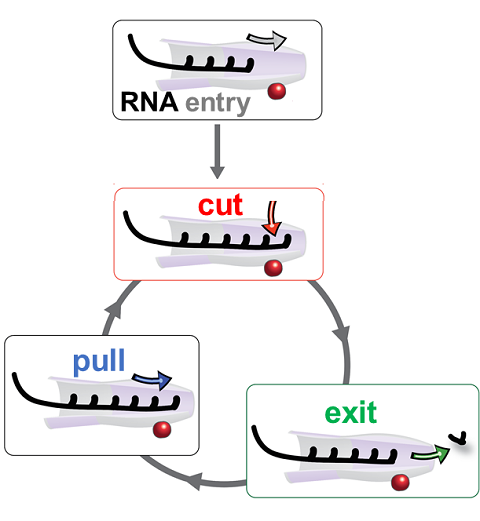Highlights of our Work
2025 | 2024 | 2023 | 2022 | 2021 | 2020 | 2019 | 2018 | 2017 | 2016 | 2015 | 2014 | 2013 | 2012 | 2011 | 2010 | 2009 | 2008 | 2007 | 2006 | 2005 | 2004 | 2003 | 2002 | 2001

image size:
386.7KB
made with VMD
RNA molecules are continuously synthesized in living cells as carriers of
biological information written in the sequence of basic RNA units, called
nucleotides. To keep cells healthy, RNA molecules not longer needed or with
errors have to be removed. A large barrel-like protein complex, the RNA
exosome, is a molecular machine that degrades unneeded RNA molecules, pulling
them inside its long internal channel and cutting them sequentially into single
nucleotides. A new
molecular dynamics study, employing NAMD, shows that a special
active protein subunit of the exosome, called Rrp44, grips tightly the RNA
molecule throughout its extended channel. Rrp44 grips RNA molecules with five
or more nucleotides in length while their ending nucleotides get sequentially
cut, whereas shorter RNAs are only weakly bound and unlikely to be cut. The
simulations reveal how the exosome can act both as a molecular motor that pulls
RNA, without energy input other than the one released in nucleotide cleavage,
as well as an enzyme that cuts RNA. More information is available on our RNA
exosome website.



